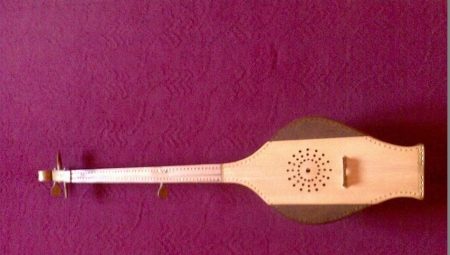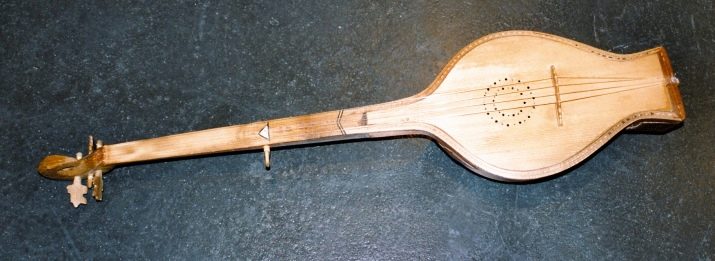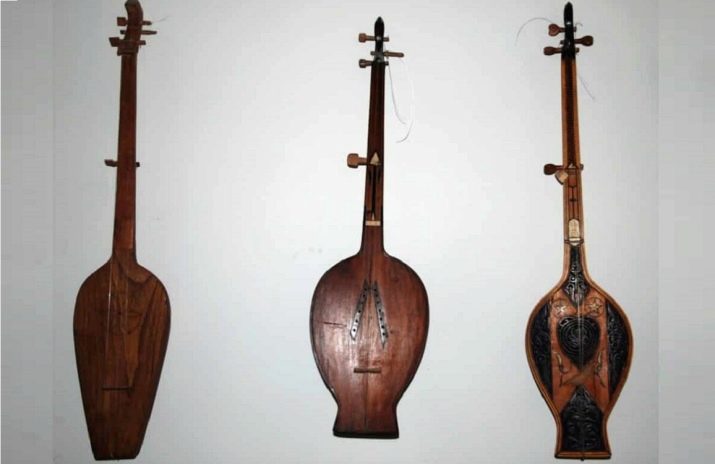All about chonguri

Chonguri is a four-stringed folk musical instrument that has become widespread in the western regions of Georgia (Guria, Samegrelo, Adjara). Refers to the plucked group of musical instruments. It has minor design differences in different places. The instrument is mainly used for accompaniment purposes. It is customary to perform songs accompanied by chonguri - both solo and for a larger number of voices.


History
Traditionally, the chonguri was perceived as a purely female instrument, but now men are often taught to play it. At the same time, it is quite successful. Most often, the chonguri part acts as an accompaniment to singing and dancing, but it sounds very rarely solo. It is believed that this folk musical instrument appeared not earlier than the 17th century. Most likely, it is just an improved version of another plucked musical instrument in these parts - the panduri, which has only 3 strings.
The main technique of playing a distinctive Georgian instrument is to clap three or four strings. Chonguri improved in the 30s of the last century thanks to the skill of K. A. Vashakidze, K. E. Tsanave, S. V. Tamarashvili and other specialists. There is a family of chonguri, which includes such instruments: prima, bass and double bass. These instruments designed by Vashakidze were included in the orchestral ensemble of Georgian folk instruments.
There are many virtuosos among the musicians who have mastered playing the chonguri. The instrument sounds unusual and charming, as if telling a beautiful legend about the beauties of Georgia.


Peculiarities
The instrument under consideration has its own characteristics that distinguish it from other similar products in the musical culture of the peoples of the world.
- Not so long ago, only horsehair was used in the manufacture of strings for chonguri, but today it is no longer so relevant.Now, high quality silk threads are mainly used for strings.
- Modern chonguri can be played in different keys, depending on the songs being played. However, individual melodies from start to finish can be played in the same key.
- Traditionally, the neck (neck) of a chonguri has no divisions into frets (like a violin), but you can also find variants with frets (like a domra or a guitar).
- The fingers are used to play this instrument, holding the chonguri in an upright position on the left knee.
- The size of the product is approximately 100 cm in length (body with neck and neck head).


Probably, those who are interested in chonguri will also be curious to know the secret of making the instrument. In the most wind-blown place, the smoothest tree without knots was chosen (usually mulberry tree is chosen). Mainly for the Georgian chonguri, an even part of the tree between the branches is used. The masters do not work with curved parts.
The selected tree is cut and the resulting log is split in half. Each of the parts is called "grandfather". Chonguri is made from them. The harvested tree is stored in a cool place (away from sunlight and drafts). The wood dries for 30 days. If you do not wait for the material to dry completely, the product from it will not turn out to be of high quality. With a high probability, the tree will crack, the work of the master will be in vain.



The grandfather is treated like this: the core is taken out with a chisel, and then cleaned. The front part prepared in advance is attached to the prepared grandfather and kept for several hours. After that, rivets are installed on the neck and the yoke (or bridge) is strengthened. Then a bracket is made on which the strings are attached. On the bridge and the bracket, four notches are cut for laying the stretched silk strings.
For a sonorous chonguri sound, the wood in the middle of the three-part top of the instrument should be pine.
Making one of these takes three days, which complies with the rules for creating this musical instrument.

Structure
The length of a chonguri is on average 100 cm. This indicator may differ in the range of 1.5-3 cm. Errors in size are not of fundamental importance for this piece of art.
Chonguri's design is pretty simple. It consists:
- from the body;
- neck (cervix);
- neck head;
- additional parts (bracket, yoke, tuning pegs).
The body is distinguished by a smooth pear-shaped shape, truncated at the bottom. Various types of wood are suitable for the manufacture of the case - pine, mulberry, walnut. Several small resonator holes can be seen on the top. The neck of the instrument is long, a peg of a short string called "zili" is cut into it, and the construction is completed by a curved head with 3 pegs and the same number of main (long) strings.


Chonguri is not exactly the same instrument as the panduri, although in some parts of eastern Georgia it is called that. And it's not just the number of strings. Panduri always has a division into frets. During the performance of the melody on chonguri, the musicians move their fingers from bottom to top, and when playing the panduri, the movements are made in the opposite direction. But functionally and externally, they are very similar. Both instruments mainly act as an accompaniment, used to accompany songs in the collective work of Georgian women. Equally, tools are used in ancient rituals.
The chonguri hull is fragmentarily constructed from thin wood plates, which allows for maximum thinning of the hull walls. They can be bent to create a greater volume of resonance, which has a positive effect on the timbre and loudness of the musical instrument.

For more information on chonguri, see the next video.








